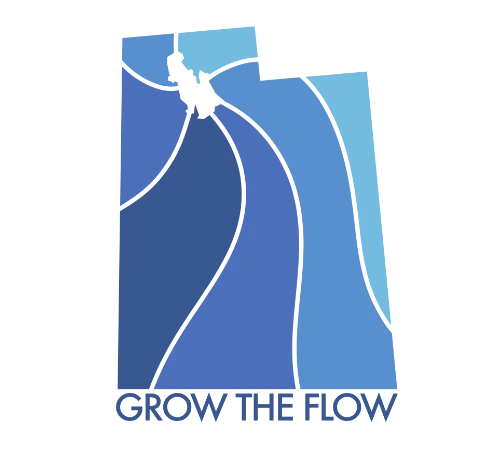Photo by Don Grayston
You shouldn’t feel bad about taking a little extra time in the shower. In fact, indoor recreational water usage only takes about 5% of the overall state water usage. There’s also evidence that indoor water usage will actually all make it into the lake anyways. So, longer showers could technically be helping the lake. But, you can still do your part by simply adjusting your sprinklers, saving about 25% of your outdoor usage without cutting a single blade.
States generally govern water allocations without federal intervention. Most western states abide by the Doctrine of Prior Appropriation which grants water rights or the right to divert water to a person who “uses water for a beneficial use.” Things like irrigation, industry, and domestic use are deemed “beneficial.” This doctrine applies a hierarchical structure or a “first in time, first in right” policy. The beneficial user who came first takes precedence or “seniority” and cannot be overturned as long as their use is still beneficial. When the water is not used for a period of time, appropriators forfeit the water right.
In the Great Salt Lake area, the U.S. Bureau of Reclamation holds the largest water rights for over 800,000 acre-feet of water. This water goes to large scale water storage such as Deer Creek and Jordanelle. These man-made reservoirs are then managed by water user organizations for municipal use, industrial use, and agriculture. Currently, 651.7 billion gallons of water are siphoned from the Great Salt Lake’s feeding rivers which results in 2.9 million acre-feet evaporating each summer.
Of course, as a GSL conservation group we have our fair share of resources about the effects of low water levels, so I won’t dive into that. But I do want to delve deeper into why we, as a state, have such a hard time with our water.
Where does our water go?
Most of our water, in fact around 85%, goes to agriculture. As seen below, about 88% of our irrigated cropland is dedicated to foraging crops which are extremely water intensive.

Agricultural Irrigated Land and Irrigation Water Use in Utah | USU
So, why hay? Money. As outlined by USU professors for 2021, “hay sales generated $267 million and contributed to just over 2% GDP.” Alfalfa, the primary hay type, isn’t inherently bad. In fact, alfalfa replenishes nitrogen, grows well in high altitudes, and doesn’t require yearly replanting which makes it an attractive crop for Utah farmers.
Furthermore, hay is a substantial export for Utah. In 2021, Utah produced 2.2 million tons of alfalfa hay which accounted for 1.8% of the nation’s total output in livestock feed. But, according to an economic study done by Garbriel Lozada, 68% of our agricultural water is sucked up by hay.
Going back to the concept of water rights and the Doctrine of Prior Appropriation we can understand why state officials allocate so much water to farmers. Back in 1897, the Office of State Engineer was created with the responsibility of divvying out water rights. At this time, with local farming being the primary food source, farmers having the majority of water rights made sense. This office, oblivious to the future, gave out rights which we now realize are unsustainable to farmers. The “first in time, first in right” policy comes back into play.
If water usage is no longer “beneficial,” the right would be taken away. Thus, farmers are incentivised to use as much water as they have to keep the rights. Additionally,the price of water is quite low compared to surrounding states because the state subsidizes our water and includes it in property tax. So, an organization that doesn’t pay property tax can use a lot of water while still only paying the taxes of an individual resident.
What conservation efforts are taking place? Thankfully, like most issues surrounding the lake, politicians are waking up to the issue of water. In 2022, H.B. 33 Water Flow Amendments, was passed incentivizing farmers to use less water while also allowing them to diversify their farms with lower risk. This bill also amended the practice of sending water to the Great Salt Lake, where previously it was seen as wasteful but is now seen as “beneficial.” Before, agricultural water was not metered, meaning farmers paid for pipe shares not gallons. Moving to metered water is a good but lengthy solution.
All in all, these solutions for water conservation will take time and discomfort. It is neither fun nor an easy topic. But, if we continue to support lasting change, sooner or later, we will see it.
